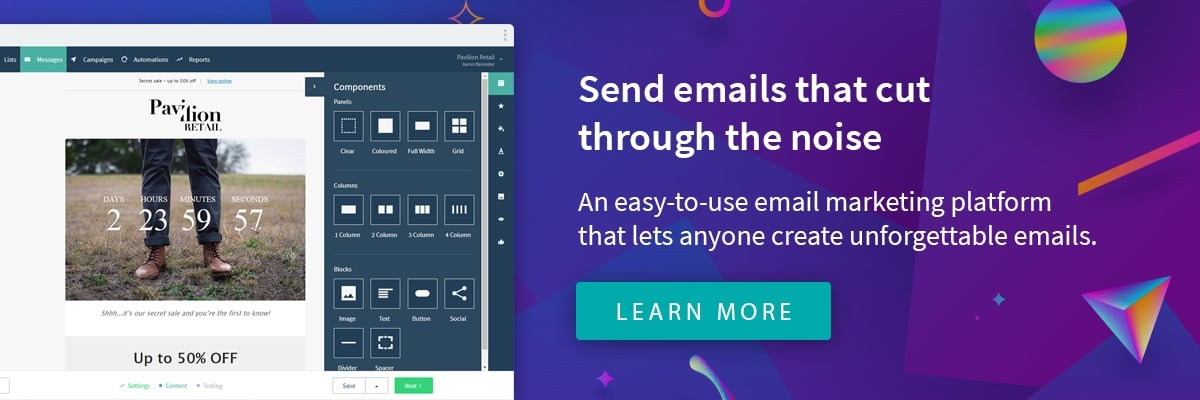Most shoppers wince when they’re asked to become a member of a loyalty club. They think of wasting time filling out lengthy forms, divulging personal details and then being constantly spammed.
But it doesn’t need to be this way – as Costa Coffee have proven. They’ve successfully recruited more than 3 million people to their loyalty club and have over 1.6 million email addresses (Campaign Live, 2010). Their audience is highly engaged, with their emails boasting a 35% open rate and a 70% redemption rate for the offers featured in their campaigns (Fast Company, 2013).
How do they do it? They give control to the customer, while building trust with personal email communications that are relevant.
Here we take a look at how Costa have used their email marketing programme to improve the customer experience, data-capture and retention of their loyalty programme.
Taking away the barriers
Costa took the pain out of joining their loyalty scheme by taking the admin online. To sign up to their coffee club all you need to do is pick-up a free card in-store – there are no strings attached, no forms and no waiting around.
Costa then incentivise their customers to register their card with their details online. People pick-up the cards at the same time as making a purchase, so they will usually have a few points on them already. However, to use the points customers must complete their registration online. By making the card free and easy to pick-up, and by putting the points on ready to redeem, Costa make membership straightforward and worth the small effort that it does involve. They don’t force customers to give them information in the coffee shops – they trust their customers to do this themselves online and reap the benefits.
Making it simple
Lots of companies over-complicate their data-capture methods. They’re obsessed with capturing as much information as possible but in doing so put the customer off. When they do capture the data it’s often imported onto their CRM system and databases with lots of errors, meaning companies end-up with information requiring lots of regular cleaning.
Costa buck this trend by asking the customer to input the data themselves online. When the customer inputs their own data there’s less chance of errors and no need to pay agencies to input it. As the membership is completed online it means there’s little time delay between joining the club and receiving your first email. And because the rewards are sent by email the member is far more likely to enter an email address.
Starting a conversation
Email isn’t a one-way street – it’s a conversation. And the best way to start a conversation is to ask a question. Costa do a great job of this with their email that asks people what type of coffee drinker they are.

Instead of spending hours profiling their customers’ data they simply ask the customers to profile themselves. They do this by sending a quirky email asking them about their reasons for drinking their coffee. Are they the early morning caffeine addict or coffee-with-a-book type? Do they go for a coffee to daydream or gossip with friends? This approach saves hours of data-profiling and is a good way of engaging the recipient. They even incentivise the recipient to give them as much information as possible by offering them extra loyalty points!
Getting to the point
Costa don’t send lots of long emails. They realise that purchasing coffee is high frequency but low engagement activity – and like their coffee, their marketing can easily be digested on the go.
The emails alternate between promotional offers and brand messaging but the structure is always clear and simple. They don’t make the recipient read lots of text – they’re designed to be scanned quickly. Their emails are designed to take up 10 seconds of their customers’ lives – they’re not asking you to dedicate more time than you’re willing to invest.
Being personal
Within a typical email there are up to 25 elements that can be personalised according to where the customer is in the purchase cycle, the type of products they’ve purchased or are likely to purchase and their consumption habits.

Costa look at the balance on the recipient’s loyalty card and include offers that are relevant to them. This high level of personalisation makes their communications feel relevant, meaning recipients are far more likely to convert. By matching offers to the balance on the loyalty cards it means they again remove barriers to redemption which leads to the high rates they boast.
So there you go – the art of using email to improve your loyalty club membership. If you’re still using paper forms to gather data then look at how your email programme could be used to support you better.
You may just find that by taking loyalty online you can not only improve your data-capture, efficiency and membership but you also find an easier way to start a conversation.

